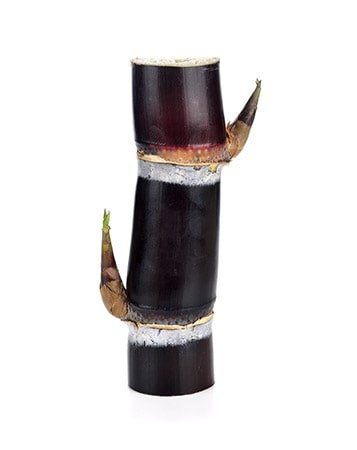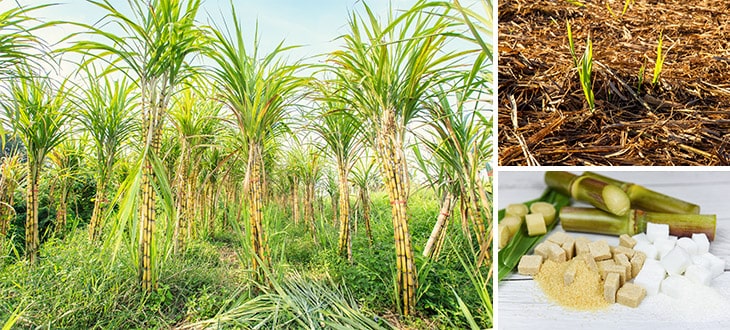How To Grow Sugar Cane
Do you want to know how to grow sugarcane? This guide is exactly what you need to help you start your sugarcane crop in no time.
In most parts of the world, sugar consumption has become an integral part of daily life, making sugar production a global industry. We add it daily to our coffee, we find it in cookies and juices, and it is indispensable in the lives of many of us. Yet, some people don’t know where the sugar is coming from. So let’s find out.
About 70% of the sugar produced globally is made from sugarcane. The rest is produced mostly from sugar beets and only a small percentage is extracted from plants like corn, maple trees, and various fruits.
The leading countries to the production of sugarcane are Brasil, India, and Thailand, followed by the United States. The states that cultivate the most sugar cane for industrial use in the US are Florida and Louisiana.
Before learning how to grow it, let me first tell you a few things about sugarcane.
Disclosure: This page contains affiliate links. This means that the owner of this website might be compensated for any qualifying purchases made via these links.
Contents
About Sugarcane
Sugarcane or sugar cane (scientific name Saccharum officinarum) is a perennial plant with origins in the tropical Indian subcontinent and Southeast Asia.
Sugarcane is neither a fruit or a vegetable. More precisely, it’s classified as a grass and is a member of the same family (Poaceae) that includes plants like bamboo, barley, rice, corn, wheat, and more.
The sugarcane is primarily utilized for the production of sucrose, or as we commonly know it, “table sugar.” It is also generally used as a raw material in the food industry and alcohol making.
Besides for industrial usage, people often cultivate sugar cane in their garden mostly for chewing it as a quick sweet snack. The edible part of raw sugar cane is the core of the stalk. However, you can only chew it, not swallow it since it’s very fibrous.
Sugar Cane Plant

A sugar cane plant looks similar to bamboo. It has a stiff stalk that grows typically between 10-13 feet (3-4 m) in height and with a diameter of about 2 inches (5 cm). Some species can even reach 20 feet (6 m) or more in height.
The stalk is composed of segments called joints. Each joint is made up of a node and an internode (the sections between nodes). These internodes are firm on the outside and have a softer core that holds a sweet juice.
Based on the color, there are several varieties of sugarcane:
- Green sugar cane
- Yellow sugar cane
- Red sugar cane
- Purple sugar cane
- Black sugar cane
The color of the stalk might also change depending on how much the plant is exposed to direct sun. Hence, the same variety grown in different environments may manifest different color shades.
At the top of the stalk, the sugarcane grows narrow, elongated, pointy green leaves similar to the ones of the corn plants. The uppermost section of the stalk contains less sucrose than the lower part.
How To Grow Sugar Cane
In tropical areas, farmers typically grow sugar cane in large open fields. When you want, however, to grow sugar cane at a relatively small scale for your own use, you can either plant it in pots or directly in your yard or garden.
Climate
Sugar cane thrives in tropical climates. These climates are characterized by constant monthly average temperatures of 64℉ (18℃) or higher year-long, plus abundant seasonal rains. Therefore, judging by the characteristics of the climate where it grows the best, we can say that sugarcane is a sun and water-loving plant.
Best Soil
Sugarcane can thrive in almost any soil type as long as it has sufficient irrigation and proper water drainage.
Besides those mentioned above, just like any plant, the sugar cane needs certain nutrients to grow. In addition to the essential three macronutrients required by any plants (nitrogen, phosphorus, and potassium), this crop type needs abundant supplies of calcium, magnesium, and sulfur.
The best soil pH for sugarcane is between 6 and 6.5 (slightly acidic to neutral). Even though sugarcane can tolerate a substantial degree of soil acidity or alkalinity, the plants that grow in such soils will usually provide a lower level of sugar.
For soils that don’t meet the minimum requirements, it’s recommended the usage of a soil amendment. An efficiently proven soil-quality booster for sugar cane crops is biochar.
A study conducted in Cantho University, Vietnam, and published on Livestock Research for Rural Development has concluded that biochar has not only improved the overall quality of the soil in a sugarcane crop but also resulted in raising the sucrose content in plants.
Biochar is a carbon-rich soil conditioner obtained by the combustion of fibrous biomass in oxygen-restricted conditions. This component can enhance soil’s quality and its fertility by raising the pH level, increasing its capacity of retaining moisture, preserving the nutrients better, and attracting more beneficial microbes and fungi.
When To Plant Sugar Cane?
Sugarcane is a perennial plant and can grow for several years in tropical climates because the temperatures are relatively high throughout the year. However, even if it survives an extended period, after about three years, the plant will produce less sucrose.
In other climates, the frost will kill the sugar cane plants. There is one variety of sugarcane that is cold-resistant, commonly known as cold-hardy sugarcane (Saccharum arundinaceum). However, this species is only grown as an ornamental grass and not for sugar production.
Sugar cane is usually planted in late summer or early fall (from mid-August to November).
How To Propagate Sugar Cane
Growing and propagating sugarcane is not very difficult. There are mainly two ways to start your sugar cane crop:
- Grow sugar cane from seeds
- Grow sugar cane from cuttings
Growing sugar cane from seeds
While growing sugarcane by seeds is not the most popular choice, it is one of the ways you can start your first cane crop.
Once you plant the seeds, it will typically take between 7-14 days for them to sprout. When seedlings are large enough, they should be ready for transplanting in the garden or larger containers.
You might not be able to find sugar cane seeds in all the stores that sell plant seeds because the demand for it is not as high as for the conventional garden plants. Also, most stores will only sell the seeds in bulk.
The number of merchants that sell sugar cane seeds on Amazon is also pretty limited. Hence, you might want to consider growing your sugarcane directly from cuttings since it’s faster and the success rate is also higher.
Growing sugar cane from cuttings
The preferred way of propagating sugar cane is by stalk cuttings. You can either split a stalk you already have or buy some already cut. You can even purchase already sprouted sugarcane rootstocks to reduce the growing time and increase the success chances even more.
For learning, let’s assume you have a whole sugarcane stalk that you want to use to grow more plants. While you can probably grow new plants by burying the entire trunk horizontally into the ground, it’s not the best way to do it.
To reduce the chances of rotting, you should first cut the stalk into smaller segments by following a few basic rules.

Keep in mind that the nodes will develop new roots, not the section between the nodes. Therefore, every cutting should contain at least a node. Some people even prefer to keep two nodes or more.
Using a pruning lopper, cut the stalk a few inches under a node and a few inches above the same or the next node.
Next, you can put the cutting in water until the nodes develop new roots or plant it directly in the ground or a container. Both methods work just as well. The advantage of planting it directly into the soil is that you skip the extra steps.
If you choose to put the stalk section in water, you can place it vertically and only sink the first node if the cutting has more, or you can even put it horizontally and submerge it entirely. I’ve seen people doing it successfully in both ways.
If you wonder whether you should plant the sections vertically or horizontally when you establish the cuttings directly in the soil, find out that there isn’t a correct or wrong way. Both will work, and the sugarcane sprouts will find their way to the surface either way. Just make sure that you don’t bury them too deep into the ground.
Each sugarcane plant can then develop several stalks.
When To Harvest Sugar Cane?
In tropical, frost-free climates, farmers allow sugarcane crops to grow between 12 to 18 months. This is usually the time range when the cane contains the highest level of sugars and gives the best yields.
Once harvested, keep in mind that the sugar cane won’t last too much in their raw form. Typically, after a week or two, because of the high level of sugars, the plants will begin to ferment and will soon become inedible.
Final Word
If you live in a hot, frost-free climate and you want to add a bit of diversity to your garden, you should try growing sugar cane. They don’t require too much care and are easy to propagate. In addition to that, sugarcane juice, besides the fact that it is delicious, it’s also rich in calcium, magnesium, iron, and other vitamins and minerals which are good for your health.
References:




